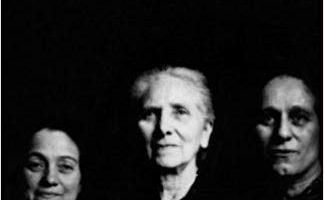Jewish Women in America: An Historical Encyclopedia
Jewish Women in America: An Historical Encyclopedia
edited by Paula E. Hyman and Deborah Dash Moore
Routledge, $250, 2 volumes, 1,770 pages
I have to express my excitement at the astonishingly comprehensive and pioneering contribution Paula Hyman and Deborah Dash Moore have constructed. A treasure-trove for future scholarship in the humanities, Jewish Women in America will become an indispensable research tool for anyone interested in the history of Judaism, women’s issues, and American culture.
An example: Composed by Anne Lapidus Lerner, one of the hundreds who contributed research and writing, the Encyclopedia essay on LILITH magazine begins with its founding in 1976 by Susan Weidman Schneider and others, remarks on its highly educated readership, explains the character of the mythic madwoman Lilith, describes the magazine’s commitment to feminism and Judaism, includes a photograph of the premiere issue’s cover, and then analyzes especially important articles (about JAP-baiting on campus, feminist philanthropy and women’s rights in Judaism) that appeared in its pages. With considerable range and attention to detail, this entry typifies the 800 individual biographies and 110 topical articles.
The biographies include educators, social workers, community activists, paleontologists, medical sociologists, charitable volunteers, socialist journalists, dancers, archeologists, philanthropists, pianists, birth controllers, businesswomen, even doll makers. The topical essays cover such subjects as “Assimilation of Nineteenth-Century Jewish Women,” “Colonial Entrepreneurs,” “Food,” “Reconstructionist Judaism,” “Sephardi Women” and “Vaudeville.”
Any reader can quibble with editorial choices excluding particularly notable Jewish American women. However, what won’t be found pales in comparison to what is found between these covers. First, there is the often pleasurable shock of “I didn’t know she was Jewish!” I felt this way reading about Jane Bowles, Carol Gilligan, Goldie Hawn, Louise Nevelson, Ayn Rand.
Second, there is the pure excitement of intellectual discovery. One example will suffice to explain my exhilaration: Hannah Wilke (1940-1993), a performance artist who used her own body as a vehicle to come to terms with various representations of femininity. According to Debra Wachks’ entry, Wilke’s “S.O.S.—Scarification Object Series” of the mid-1970s creates the illusion of scars on the artist’s body and this “‘scarification’ links beauty with vulnerability and death, via such references as numbered tattoos on Holocaust victims and African cicatrization.” By the time you read this review, I will have trotted over to the art museum library to check out Wilke’s works. Anyone who flips through Jewish Women in America will discover other such unexpected narratives.
Susan Gubar is a Distinguished Professor of English at Indiana University. Most recently she is the author of Racechanges: Black Skin, White Face in American Culture (Oxford University Press. 1997).


